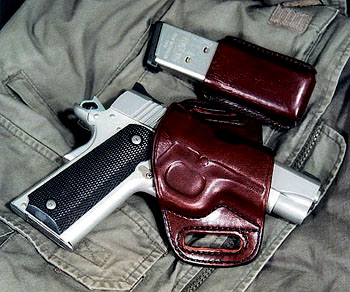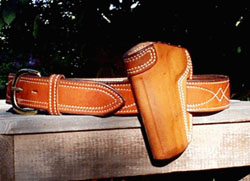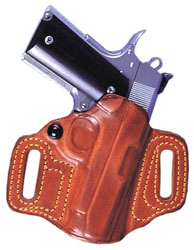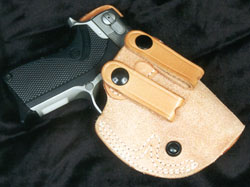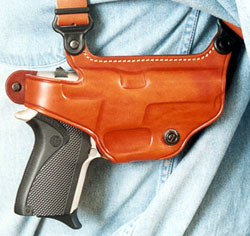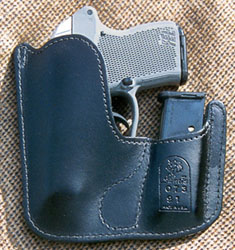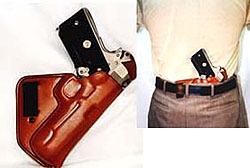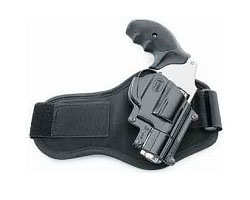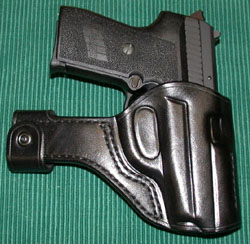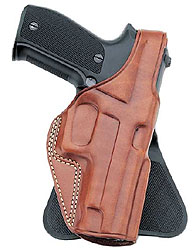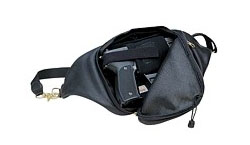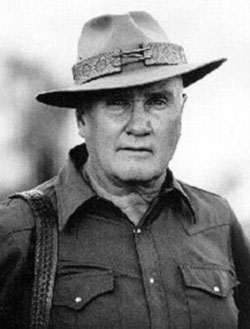
by Jeff Cooper
So here we are in the “Age of Extortion.” Our local friendly felons have finally discovered what has long been taken for granted in what we used to call “more backward countries”—that crime does pay—in millions. All you need to do is threaten to do something terrible and people will throw money at you. You don’t need any particular talent or skill to get rich this way, and you don’t need education or training. The only requisite is nastiness, and that is no rare quality.
We can speculate at length upon why this foulness has come upon us so strikingly at this point in our history, but I doubt that any incontrovertible conclusion will result. My own suggestion is simply overpopulation. Like rats, we get testier as we get crowded. By simple arithmetic, if the proportion of goblins to people in our society remains constant, doubling our population doubles the number of goblins. And they reinforce each other as their numbers rise.
But such speculation is academic. We have the problem; never mind why. What shall we do about it? In a socialist atmosphere, the immediate response is to hand the problem to the state. Pass a law! Any law. Just so you can say that something has been done. And above all, spend money. We have come to assume that the more money we spend on a problem, the quicker it will go away.
Now it is quite true that the state can indeed abolish extortion, terrorism, and crime. History offers many examples of nations in which none of these things existed. We can start with Senacherib of Assyria and browse on up to Porfirio Diaz of Mexico. An iron fist will do it. That’s the state’s simple and effective answer to disorderly conduct. If you want it arranged so that the state will protect you, you can do so. What you give up in return is your liberty.
No deal.
The man to protect you is you. Not the state, not the agent of the state, and not your hired hand—YOU!
How often is our intelligence insulted by the fatuous claim that we should rely on the police for our physical security! I cannot believe that the people who advance this idea believe it themselves. The police do indeed abort a certain amount of violent crime by their coincidental presence on the scene, and that’s fine. But to tell us that all we have to do is call a cop when confronted by a troll is to talk like a fool—and those who tell us this know it.
The “in” crime today is kidnapping. The police have never prevented a kidnapping. Not once. On the other hand, the intended victim often has. You don’t hear much about these latter episodes, because a crime that does not take place is not newsworthy, but it is my business to know about such things and I keep track of them as best I may, and there have been at least a dozen instances brought to my attention in the last two years.
Hiring other people, public or private, to protect yourself, is perhaps not totally futile, but it must never be considered more than marginally effective. Both policemen and bodyguards can be suborned, and skill levels are problematical.
Pistol skill is not something to count on in a hired hand. Two recent examples stand out because they were caught by television cameras. These were the attempts on Governor Wallace and Imelda Marcos. In each case, guards were plentiful, and armed, but not sufficiently skilled. In each case, there was plenty of time to hit the attacker before he acted, but those responsible reacted only afterward.
On the other hand, the intended victim can seek his own skill level, and he can put it to use more quickly than any other person when he suddenly finds that he himself is a target.
Your best protector is you!
Apart from the skill factor, there is the matter of reliability. A man you hire to protect you can be hired by somebody else not to. It is nerve-wracking to be dogged about by armed men on your daily rounds, and it is also both conspicuous and un-private.
Some years ago, I undertook to train the personal guard of a certain chief of state in pistolcraft. When the course was completed, I was able to address my client thus:
“Your Excellency, 24 of your 28 men are now distinctly more efficient with their sidearms than the generality of those who guard the President of the United States. They are very good, but I don’t know who they are—I hope you do.”
He knew what I meant. One of his predecessors in office had been murdered by one of his own guards. Of my students who previously employed bodyguards, most now do not, except as car watchers.
Your best protector is you!
Still we hear, over and over again, that we should not be armed, that we should not resist, that we should rely on the police for our personal safety—that our best answer to violence is to give up. Such drivel demands a stronger stomach than mine.
One bleeding-heart type asked me in a recent interview if I did not agree that “violence begets violence.” I told him that it is my earnest endeavor to see that it does. I would like very much to ensure—and in some cases I have—that any man who offers violence to his fellow citizen begets a whole lot more in return than he can enjoy.
Your best protector is you!
The obvious way to eradicate crime is to eradicate criminals, but neither the lawgivers nor the constabulary seem inclined to do this. The man who elects to prey upon society deserves no consideration from society. If he survives his act of violence, he rates a fair trial—but only to be sure that there has been no mistake about his identity. If he is killed in the act, there can be little doubt about whose act it was.
But we don’t want a “Porfiriato,” in which the police simply shoot all suspects out of hand. Such a regime may indeed have a certain austere appeal in today’s climate of urban chaos, but to trade one’s liberty for security is to sell one’s soul to the devil, as Ben Franklin noted. And, to quote James Burnham, it is both our lives and our liberties that are at stake.
Laws are not the answer. We have laws against murder. We have laws against kidnapping. We have laws against extortion. And murder, kidnapping, and extortion are on the rise. The answer, it seems to me, is wrath. Let the thug take his chances with an alert, prepared, and angry citizenry. It may very well spoil his whole career.
This is not a call for vigilantism: It is a call for self-reliance. For those who feel short on self-reliance, I have a suggestion. Take up practical pistol shooting as a recreation. It is a good game. It is fun. It is “relevant.” And it does wonders for your self-reliance.
Your best protector is—as it always has been—you!

